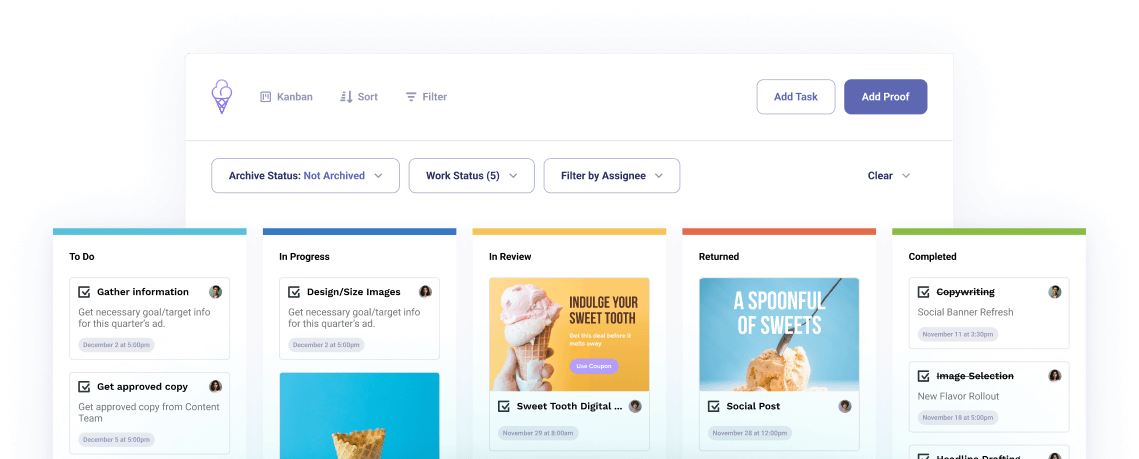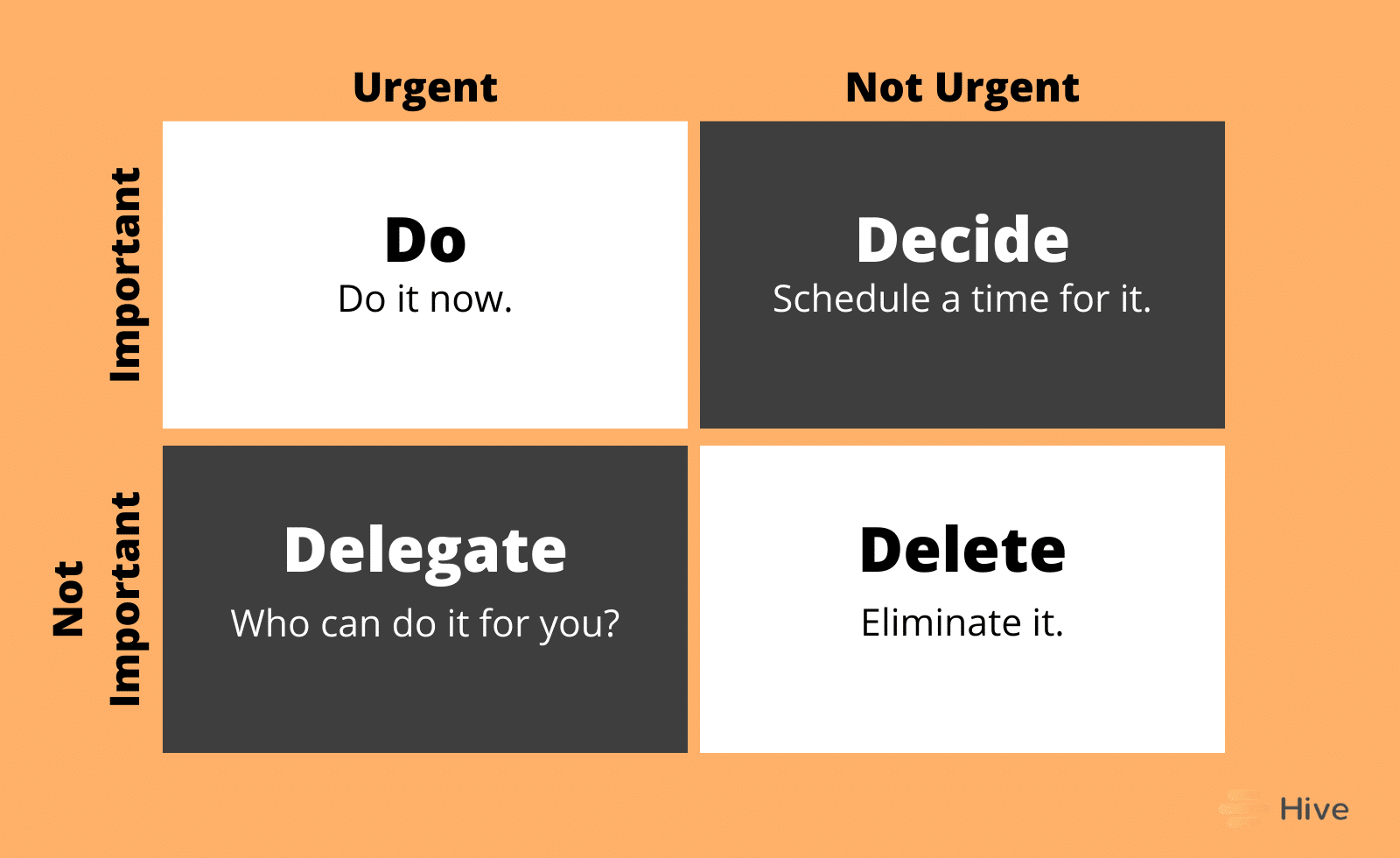
Have you ever felt overwhelmed by a seemingly endless list of tasks and deadlines? Do you wish you could breeze through your workweek without needing to sleep or to magically grow an extra pair of hands? If so, expanding your team might be a solution. But if not, mastering multiple project management best practices is the key.
In this blog post, we’ll explore embracing new project management trends to stay ahead, effectively managing remote teams to maintain productivity, and implementing time management strategies to juggle tasks efficiently. By applying these insights, you’ll be better equipped to handle the complexities of managing multiple projects, ensuring you stay on track and meet your deadlines with confidence.
What Is Multiple Project Management?
Multiple project management (MPM), also known as multi-project management, is defined as how a project manager selects, plans, and has a comprehensive overview of an organization’s entire project landscape.
In executing a successful MPM initiative, the project manager needs to account for all variables that affect it, like:
-
Changing priorities
-
Varying team capacity and availability
-
Clashing deadlines.
High-performing organizations prioritize ongoing project management training, with 83% offering continuous development programs. This commitment to continuous development ensures that project managers and their teams are equipped with the latest skills and knowledge to handle multiple projects effectively. You must find the style that fits you to deal with them properly. Doing so is half the battle won!
Now that we have defined MPM, let us move on to the most pertinent questions.
What Is the Best Way for Project Managers to Organize Multiple Projects?
We hate to be the bearers of bad news — there is no one-size-fits-all in MPM. The strategies and tactics you need to use entirely depend on your circumstances. While there is no straightforward answer to this, it helps to ask yourself the following:
1. What objectives do you want to accomplish?
At this stage, you need to think big and brave. Imagine yourself at a time when the project has been completed — what outcomes would you like it to produce? What results would make you and your stakeholders feel satisfied? A project whose outcomes exceed the resources and time it takes to complete it is a successful one.
2. Who are your main stakeholders?
Next, make a thorough list of all stakeholders involved, together with their dependencies. This is the simplest and most straightforward task, yet crucial to your project’s smooth execution and eventual success. When you think about stakeholders, it helps to think in terms of the skill sets needed to carry out the project.
3. Which departments or individuals do you have to involve in it?
Continuing from the above, make another sub-list of your dream team project participants. Be uncompromising in wanting to bring together the best people that will make the project flourish. Think about the members of your organization that always deliver the best.
According to a recent study, approximately 70% of projects fail to deliver on their promises without a proper management process, but this failure rate drops significantly when formal project management practices are adopted.
This underscores the necessity of structured methodologies to ensure project success and meet deadlines effectively.
4. What will their roles and responsibilities be?
Your project team members are your puzzle pieces. Where does each one fit, and what is the reasoning behind it? Once you have allocated all roles and responsibilities, examine your project plan for any omissions or repetitions. See if there is a skill set missing or if you have added one too many chefs in the kitchen.
Finally, make note of people whose help you can enlist in place of your dream team. We live in an imperfect project management world. Having a plan B always comes in handy.
5. What is everyone’s availability like?
Before jumping into project specifics, it is paramount that you have a clear picture of everyone’s availability.
Reach out to them and their managers to present the project. Ask them what the next few weeks or months look like for them. Find out if they have any other work-related priorities that they are preoccupied with. What about their upcoming time off? Can you agree on a rough timeline that suits all parties?
6. What timelines are the most realistic?
You are now equipped with all you need to know to set out your project’s timelines.
By factoring everything in, this should be a pretty effortless process. Data is your best friend here. By consulting it for past successful projects, you should get a great idea for how long it will take your organization to execute your current project. Then add all other project deadlines and blockers to your timeline. The final time frame will reveal itself to you.
7. Identify and define project budget
A project with no budget is like a body without a soul. By defining the budget available for each project, you can adjust its scope and activities involved. After all, no one wants to set up campaigns, ads, and webinars for something that may end up costing too much. Follow this simple step to avoid wasting human and monetary resources.
8. Know your tools
What project management tools are at your disposal? It is especially useful to know each tool’s capabilities and how you can use it to reach your goals the quickest. At this stage, you may want to request access to tools you have no access to yet, or request that your organization subscribes to additional ones.
9. What checks will you put in place to track progress?
Think in terms of using a creative operations solution that tracks progress, time and effort needed. Such software allows you to set project priorities and add blockers and participants. Everything operations-related in one place, automated so you can focus on the creative side of things. Set it and forget it.
This is where Lytho’s Creative Operations platform can automate everything for you.
10. Now that you have all the necessary information, it is time to reach out.
Now is the right time to reach out to your dream team members and get them pumped about the project. Make sure to involve their direct reports in the conversation, too. Lay out the project objectives, where each member’s contribution lies, and the time frames associated with it. Be prepared for questions and possible rejections.
11. Rinse and repeat
Now that you have gone through the trials and tribulations of the planning stage of your project, you need to do the same for every other project you will manage. Repeat the process until you are happy with the results.
How Do You Manage a Team That Has Multiple Projects Assigned to It?
12. Exercise decisive prioritization
The single most important thing you can do to help your team navigate through a multitude of competing projects is decisive prioritization. Assign a priority level to each one of your projects and have your team work on what is more pertinent and pressing.
At this stage, you need to organize and optimize how you distribute work. Which project items need to be finished by EOD today? Is there anything that can wait until tomorrow or next week?
Using a Gantt chart can be highly effective in visualizing your project timeline and priority levels. Gantt charts allow you to map out all tasks, assign deadlines, and see at a glance which tasks overlap or conflict.
This helps in making informed decisions about which tasks to prioritize and when they need to be completed, ensuring that your team stays on track and focused on the most critical activities.
13. Be assertive
Next to that, you must communicate all project-related updates to your stakeholders. Do so in an assertive way and let them know that your teams are working on deliverables as fast as they can. Make sure to convey understanding for where your stakeholders come from and exert your influence where necessary when things get tight or unrealistic. YOU know how to carry out these projects the best!
14. Manage expectations
By managing expectations effectively, you will give yourself and your team(s) the necessary bandwidth to deliver while keeping your stakeholders aligned. This is arguably the trickiest part of (multiple) project management.
It requires a constant balancing act, which you must perform with care and consideration for all parties involved. It helps to have sound reasoning behind every change that you communicate, ensuring that everyone stays informed and on the same page.
15. Know when it is time to delegate
A successful project leader knows when it is time to call for reinforcements. If your teams have reached their maximum capacity and there is still work to be done, ask for help. Go to the relevant department leads and ask if they have any resources to offer.
Alternatively, you may want to put certain non-essential tasks on hold until someone can take them on. Or perhaps you may want to give the team a hand yourself?
16. Recalibrate and communicate
Projects change like the seasons. You should evolve your strategy with the projects you manage, not against them. If your priorities change, your timelines are altered, or your team’s capacity unexpectedly changes, then go with it. Recalculate your timelines and resources and communicate all changes to your stakeholders. Done!
How Do You Manage Multiple Projects With Competing Deadlines?
17. Prioritize each project and task by urgency
Start your multiple project management efforts on the right foot. Create a master view of all your planned, ongoing, and upcoming projects. Place them side by side and identify scheduling conflicts, competing deadlines, and capacity shortcomings.
Organizations with standardized project management practices are 93% more likely to meet their project goals and stay within budget. This emphasizes the need for a structured approach to handle competing deadlines effectively.
18. Create a single timeline for all your projects
Now that you know what your master timeline’s shortcomings are, you can get to work on fixing them. Make sure that you assign each of your parallel projects a priority level, so you know which ones to prioritize when the going gets tough.
19. Explore all potential options for flexibility in advance
Flexibility is the savior of every business situation where multiple people and priorities compete for the same resources. Knowing which team members and departments can offer an extra pair of hands, when necessary, will help you create a buffer. Such buffers will act as a safety net that shields your projects from failure by preventing things from getting out of hand.
20. Block time on your calendar to focus
Project management, like all other responsibilities, takes a lot of time. And time is not the only thing of the essence here – what you need next to it, is focus. With the proliferation of remote and laptop-related work, marketing and creative professionals are now expected to perform multiple tasks at the same time. And yet, our brains have not caught on to that.
The best thing you can do is to block off time on your calendar so you can focus as needed. No meetings, calls, messages, or any communication of any sort allowed. Be sure to communicate such focus time blocks in advance, though. The last thing you need is to return to a dumpster fire of a workplace after a few hours of absence.
21. Be honest with yourself and your stakeholders
Pride is a vice you are better off leaving at the door if you wish to be a successful project manager. There is no shame in deliverables getting delayed, people calling off sick, and projects generally taking longer to complete than initially thought. So, be kind to yourself.
Admit when it is time to ask for help and do so in an open and honest way. You will be positively surprised by the willingness of people to lend a helping hand. Take all the help you can get and see the situation for what it truly is. A wonder of collaboration!
How Can You Embrace New Project Management Trends?
22. Utilize AI and automation
Artificial intelligence (AI) and automation tools are revolutionizing project management by streamlining tasks and improving efficiency. Implementing AI features can help predict project risks, automate routine tasks, and provide data-driven insights. Incorporating these tools can help you manage multiple projects with greater precision and less effort.
23. Adopt agile methodologies
Agile project management is becoming increasingly popular due to its flexibility and iterative approach. By adopting agile practices, such as daily stand-ups, sprints, and retrospectives, you can improve your team’s ability to adapt to changes and deliver projects more efficiently. Agile processes can facilitate keeping your projects on track and responsive to changing needs.
How Can You Manage Remote Teams Effectively?
24. Leverage collaboration tools
With the rise of remote work, effective collaboration tools are essential for managing multiple projects. Utilizing platforms that enable seamless communication and collaboration among team members, regardless of their location, helps maintain productivity and ensures that everyone is on the same page.
25. Implement clear communication protocols
Clear and consistent communication is vital when managing remote teams. Establish protocols for how and when updates should be communicated, and use centralized tools to keep all information organized. Regular video conferences, virtual check-ins, and real-time messaging can help bridge the gap and foster a sense of teamwork.
What Are Effective Time Management Strategies?
26. Prioritize tasks with the Eisenhower Matrix
The Eisenhower Matrix is a time management tool that helps prioritize tasks based on their urgency and importance. By categorizing tasks into four quadrants — urgent and important, important but not urgent, urgent but not important, and neither urgent nor important — you can focus on what truly matters and avoid getting overwhelmed.
27. Implement time blocking
Time blocking involves scheduling specific blocks of time for different tasks or projects throughout your day. This technique helps you stay focused on one task at a time, reducing distractions and increasing productivity. Allocate dedicated time slots for high-priority tasks and ensure you stick to the schedule.
28. Utilize the Pomodoro Technique
The Pomodoro Technique is a time management method that breaks work into intervals, typically 25 minutes, separated by short breaks. This technique encourages sustained focus and prevents burnout. After completing four intervals, take a longer break to recharge. This method can help you maintain productivity and manage multiple projects effectively.
29. Set realistic goals and deadlines
Setting achievable goals and realistic deadlines is crucial for managing multiple projects. Break down large tasks into smaller, manageable steps and set deadlines for each. This approach not only makes tasks less daunting, but also provides a sense of accomplishment as you complete each step.
30. Minimize distractions
Identify and eliminate distractions that can disrupt your workflow. Create a dedicated workspace, set boundaries with colleagues or family members, and use tools to block distracting websites or apps. By minimizing interruptions, you can maintain focus and complete tasks more efficiently.
Master Multiple Project Management Today With Lytho
Mastering effective project management is essential for handling capacity and competing deadlines. By embracing new trends, managing remote teams, and implementing strong time management strategies, you can streamline workflows and enhance productivity. Apply these strategies to succeed in multiple project management and achieve your goals.
Ready to elevate your project management skills? Discover how Lytho’s project management software and collaboration tools can streamline your processes and boost productivity. Schedule a demo with Lytho today to manage competing deadlines, optimize resources, and achieve project success.
Do you want to give yourself and your creative team more room for creative stimulation by automating the boring stuff? Lytho helps you streamline your entire workflow and harmonize all brand collateral under a single, uniform platform. Feel free to reach out to us by scheduling a demo and learning how our creative solutions can boost the effectiveness of your creative projects. We look forward to speaking with you!

Ready to simplify your creative operations and start having a little fun at work again? Schedule time to talk with us.
Let us show you how Lytho’s Creative Operations Platform helps in-house creative and marketing teams do better work, ease the stakeholder experience, and stay on brand.
Schedule a Demo posted by
posted by 



